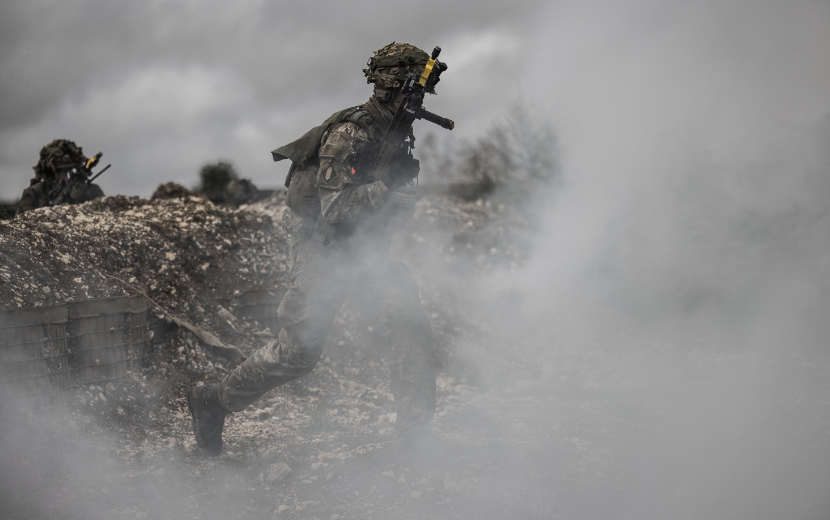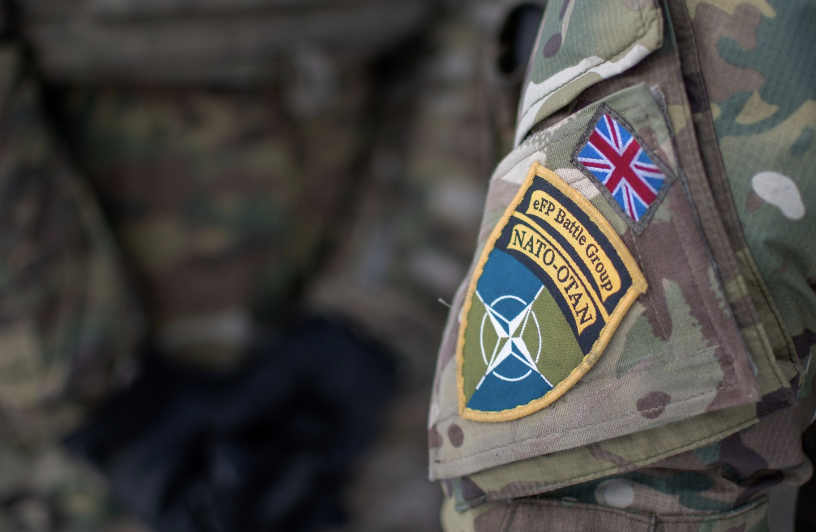
Dan Macklin
Last week, we started exploring a timely issue for the West: how does NATO readiness match up with a rising global threat level? The question led us naturally to the enduring problem of more efficient technology adoption between allied member states.
As I wrote then, I’ll write here. This is an enormous topic, and I’m far from the only one spilling ink over it. Collaborative NATO procurement is something of a ‘wicked’ problem, to use public policy jargon, and one that admits no easy answers.
But as a technology executive with nearly two decades in defence, it’s my job to think hard about these things, contributing to the conversation when I can. Plus, Skyral is a company defined by bold approaches to intractable problems. So allow me to lead by example.
The question, as I see it, can be dissected into two smaller questions:
If innovation is the supply of resources (be they human, physical, or digital) needed to maintain competitive advantage, then collaboration between adopters is a challenge of demand for innovation.
Now, I don’t believe our collective problem is on the supply side. We are an innovative bunch of nations. The territory covered by NATO is an extremely fertile ground for R&D, scientific breakthroughs, and STEM-fuelled commercial enterprise.
For proof, 78% of the world’s leading 50 universities are found in NATO countries, with seven of those in partners like Japan, Australia, Singapore or Switzerland. A similar proportion is seen in the Global Innovation Index. And many of the world’s largest, fastest growing, and most iconic tech hubs are in the North Atlantic (think San Francisco, Silicon Valley, or London, where Skyral calls home).
It goes without saying that this supply must be diligently maintained with whatever political, social, and economic incentives governments have at their disposal. NATO clearly appreciates this too, as demonstrated by two landmark initiatives in recent years centred around innovation. The unambiguously named NATO Innovation Fund (NIF) kicked off in 2022 with the backing of 23 member states, pursuing the goal of offering up to 1 billion euros to startups building products with defence applications. The Defence Innovation Accelerator for the North Atlantic (NATO DIANA ) is already working with its inaugural batch of chosen SMEs from across the alliance. These efforts show the world an obvious willingness to build a more effective paradigm for NATO technology adoption.

But although they were launched to tackle the overall problem, under our two-part model, the impact of these initiatives will likely skew heavily towards the supply side, i.e. helping hopeful young companies developing dual-use technology reach maturity, as in the case of DIANA. In other words, NATO has actively developed programmes that are really great for SMEs to earn funding and invest in their R&D. And the result is heavy supply of transformative technologies with plenty of confidence in their utility. What is missing is the structures to convert R&D products and projects into production programmes. Coupled with the lack of a collaborative ecosystem, SMEs are prevented from translating the investment in R&D into scalable programmes.
And that’s why we ought to focus our attention on the second part of our equation. Specifically, how can we consolidate the demand for cutting-edge military capabilities that’s well and truly there among NATO allies who require digital transformation? Numbers show that defence spending across NATO is at record highs, spiked by the war in Ukraine, Russian revanchism more generally, and internal attitudes toward foreign policy in the US.
Otherwise, it just descends into wasteful duplication or missed potential. The results are therefore the opposite of what market doctrine would dictate: higher costs, slower adoption, and ultimately, poorer performance on the battlefield.
To put it starkly, we see a build up of inefficiencies in the one segment of public life we cannot afford to be inefficient.
Nowhere was this made more obvious than in Ukraine, which has laid bare to the world many realities of modern warfare. The international community saw in the early days of the invasion that speed to delivery is paramount. When the new threat arrived, the old, sluggish protocols of kit procurement were no longer fit for purpose.
DIANA, nor the Innovation Fund, are going to be of much use when it comes to responding to these modern conflicts (think of DIANA’s six-month incubation period for participating companies, followed by another six-month scale period). Like I said, it’s not the supply of innovation that should worry us here. It’s what we do with it when the time comes.
Speaking to the press in November 2022, when Ukraine topped the agenda for Western defence and security officials, High Representative to the EU Josep Borrell claimed that the Foreign Affairs Council had identified 100 military capabilities – from “satellite communications to maritime surveillance” – where “joint procurement can be a win-win for all.”
“We could avoid competing for the same products, competing for the same things with a limited industrial capability. We may have greater bargaining power; we could ensure the interoperability of the armies,” Borell told the press.
What we have on our hands is something we all learned about in high school: the social dilemma. The idea that participants in a system end up with suboptimal outcomes because they choose to follow individual interests instead of cooperating.
Which, in the case of NATO’s collective defence, is not to say that these interests are not justified. Sharing sensitive technology that has novel and far-ranging implications for national security, for example, is a legitimate hesitation that every state will harbour. These are some of the most enduring challenges of international relations, and well beyond my ken to solve.
Yet while there are myriad conditions that must be created to create strategic policy alignment, some of them are perhaps easier to build than others. One such condition is trust.

Specifically, how quickly governments can get technology into frontline operations when they put their minds to it. From the British standpoint, this was achieved through the Urgent Capability Requirement protocol, which, according to the D Group report I referenced heavily last week: ‘facilitated the end user…and the engineering innovators…to work collaboratively together.”
Key word: collaboratively. It’s about contact, and contact breeds trust. We were able to close the distance between nodes on that defence value chain for better results.
That same report, published earlier this year, looked into how the UK might unlock its innovation potential to support national interests. Many of my opinions regarding NATO take inspiration from their recommendations for the UK.
One such recommendation for defence Primes and SMEs – such as Skyral – was to embrace the partnership model in order to free up the comparative advantage each party can contribute to a given defence project. On the SME side, that’s their focused technical expertise and agility.

I’m proud to say that we’re living that life here at Skyral, such as through our #Omnia partnership, where we are working alongside industry leaders Raytheon UK, Rheinmetall, Capita Defence, and Cervus , to deliver best-in-class synthetic training solutions to the UK Ministry of Defence.
With Omnia, we’re able to differentiate ourselves through both our world-class engineers and by deploying a truly unique product. The way we balance competition with collaboration allows us to remain mission focused without losing sight of our own company journey. In other words: SMEs can compete with primes, but they can also partner with them. As long as we’re all working towards the same goal: upholding democracy and protecting Western interests.
Obstacles to collective action mean that Its participating member states are spending more on defence for lower marginal returns, at a time when cooperation should be prioritised. What a revised framework for technology adoption will end up looking like on paper – we can’t possibly know. But one thing’s for sure, it will undoubtedly be born from greater trust built on shared purpose and mutual benefit.
Skyral, standing by, to make that a reality.
Stay tuned next week for the final release of Naomi’s series, where she’ll explore how dual-use capabilities for the space industry provide the perfect testbed for technology adoption across NATO.
All imagery is used under the OGL, MOD Crown Copyright 2024

Dan Macklin

This piece was drafted collaboratively by the Skyral Mental Health First Aiders Team: Victoria Gadd, Cheryl Salvador, Ciara Deeley, Billie Taylor, Nicola Forde, Paul Gammon, and Peter Imrie
Skyral People Team